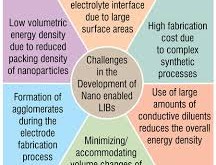Introduction Particle colliders stand at the forefront of modern physics, enabling us to recreate the extreme conditions of the early Universe and probe the fundamental building blocks of matter. Among the myriad particles revealed by these powerful machines, the Higgs boson—often dubbed the “God particle”—plays a pivotal role by endowing …
Read More »Quantum Dot-Based Quantum Computing: The Next Frontier in Technology
Quantum computing promises to revolutionize technology by solving problems far beyond the reach of classical computers. At the heart of this quantum revolution lies an emerging technology with immense potential: quantum dots. These nanoscale semiconductor particles offer a unique platform for building quantum computers, blending the worlds of quantum mechanics …
Read More »Quantum Dots: Transforming Quantum Technologies
Quantum technologies are propelling humanity into a new era of innovation, promising groundbreaking advancements in computing, communication, sensing, and cryptography. At the core of this quantum revolution lies a fascinating material: quantum dots. These semiconductor nanoparticles, often referred to as “artificial atoms,” are unlocking new possibilities by harnessing the strange …
Read More »Edge Computing Technology: Transforming the Future of Connectivity and Data Processing
In a world where data flows faster than ever, edge computing has emerged as a transformative technology that enables real-time data processing closer to the source. This shift from centralized cloud computing to a more distributed model is helping organizations address the demands of latency-sensitive applications, boost efficiency, and enhance …
Read More »Optical Metamaterials Enter Commercial Phase: Enabling Super-Resolution Imaging and Cloaking
The field of metamaterials, once the domain of theoretical research and academic curiosity, is now rapidly transitioning into a commercially viable technology. These artificially structured materials can control and manipulate light, sound, and even seismic waves in ways that defy natural behavior. One of the most exciting frontiers in this domain …
Read More »Quantum Plasmonics: Unraveling the Future of Light-Matter Interactions
Quantum plasmonics, a groundbreaking field merging nanophotonics and quantum mechanics, has introduced revolutionary methods to manipulate light and matter at the nanoscale. By harnessing light-matter interactions at the quantum level, quantum plasmonics is poised to transform a wide range of technologies, from ultra-sensitive sensors to quantum computing and secure communication …
Read More »Nanotechnology-Based Batteries: A New Frontier for Enhanced Energy Storage
In the rapidly evolving world of energy storage, the demand for batteries with higher energy and power density, extended cyclability, and improved safety is more critical than ever. As society moves towards greater reliance on renewable energy and electric vehicles (EVs), the limitations of conventional batteries have become increasingly apparent. …
Read More »Shining a Light on the Future: The Booming Optical Metamaterials Market
The optical metamaterials market is on the cusp of transformative growth, particularly as advancements in nanotechnology and photonics unlock new capabilities. While metamaterials have already begun impacting the radio and microwave spectrum—fueled by 5G networks—developing designs that operate effectively at higher frequencies, such as those in the visible light range, …
Read More »Photonic Crystals: Shaping the Future of Light Manipulation
In the realm of materials science and optics, photonic crystals stand out as a revolutionary concept with the potential to transform how we control and utilize light. These unique structures have captured the imagination of researchers and engineers alike, promising advancements across a range of fields from telecommunications to solar …
Read More »Nanotechnology in Thermoelectric Devices: A Leap Towards Enhanced Energy Efficiency
In today’s quest to conserve and recycle energy, minimizing wastage has become imperative. Every joule saved translates into less reliance on fossil fuels, which is crucial for environmental sustainability. Harvesting waste energy is now a major focus for researchers, and one of the most promising advancements in this area are …
Read More » International Defense Security & Technology Your trusted Source for News, Research and Analysis
International Defense Security & Technology Your trusted Source for News, Research and Analysis




